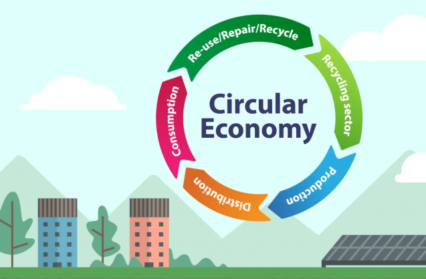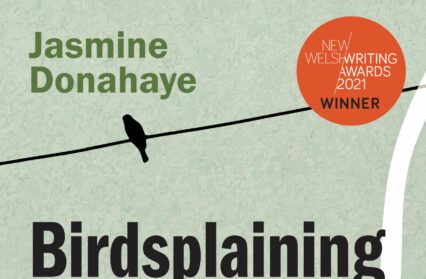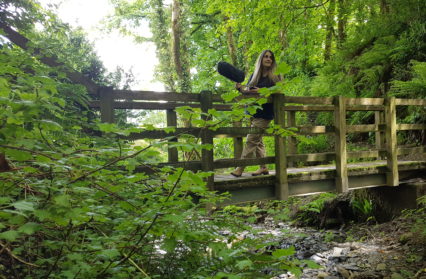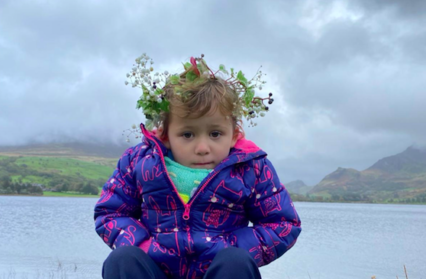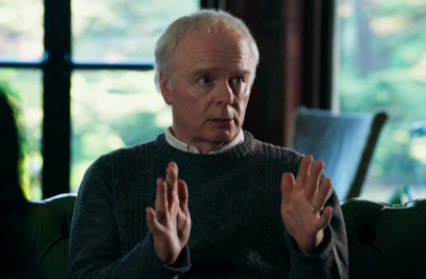Wales Arts Review is proud to present Arts and the Circular Economy, a new series of articles by Brian Royson Mayne, exploring the ways in which different art forms are promoting sustainability and embracing the circular economy. In this first article, Brian Royson Mayne introduces the series and discusses the origin of the circular economy and how it is being defined today.
This year is the United Nations International Year of Creative Economy for Sustainable Development. It is therefore pertinent to look at the role the arts and artists have had in contributing to sustainable development, one ‘that meets the needs of the present without compromising the ability of future generations to meet their own needs’. This is one of a series of articles highlighting my perspective of how painters, sculptors, musicians, and film and theatre directors have and had an important role in promoting sustainability and in particular the circular economy. How the circular economy can offer transformative ways of making and creating, changing our relationship and behaviour to things, people and the environment. The artists and musicians chosen are based on my preferences and here and there I have ‘creatively’ stretched the definition of the circular economy to my own ends, hopefully providing some fun along the way.
The 2030 Agenda for Sustainable Development, adopted by all United Nations Member States in 2015, provides a shared blueprint for peace and prosperity for people and the planet, now and into the future. At its heart are the 17 Sustainable Development Goals, which are an urgent call for action by all countries – developed and developing – in a global partnership. In parallel to the Sustainable Development Goals, the notion of a Circular Economy as an alternative economic framework has been gaining significant momentum over the last few years, and is seen as offering an approach for achieving local, national, and global sustainability.
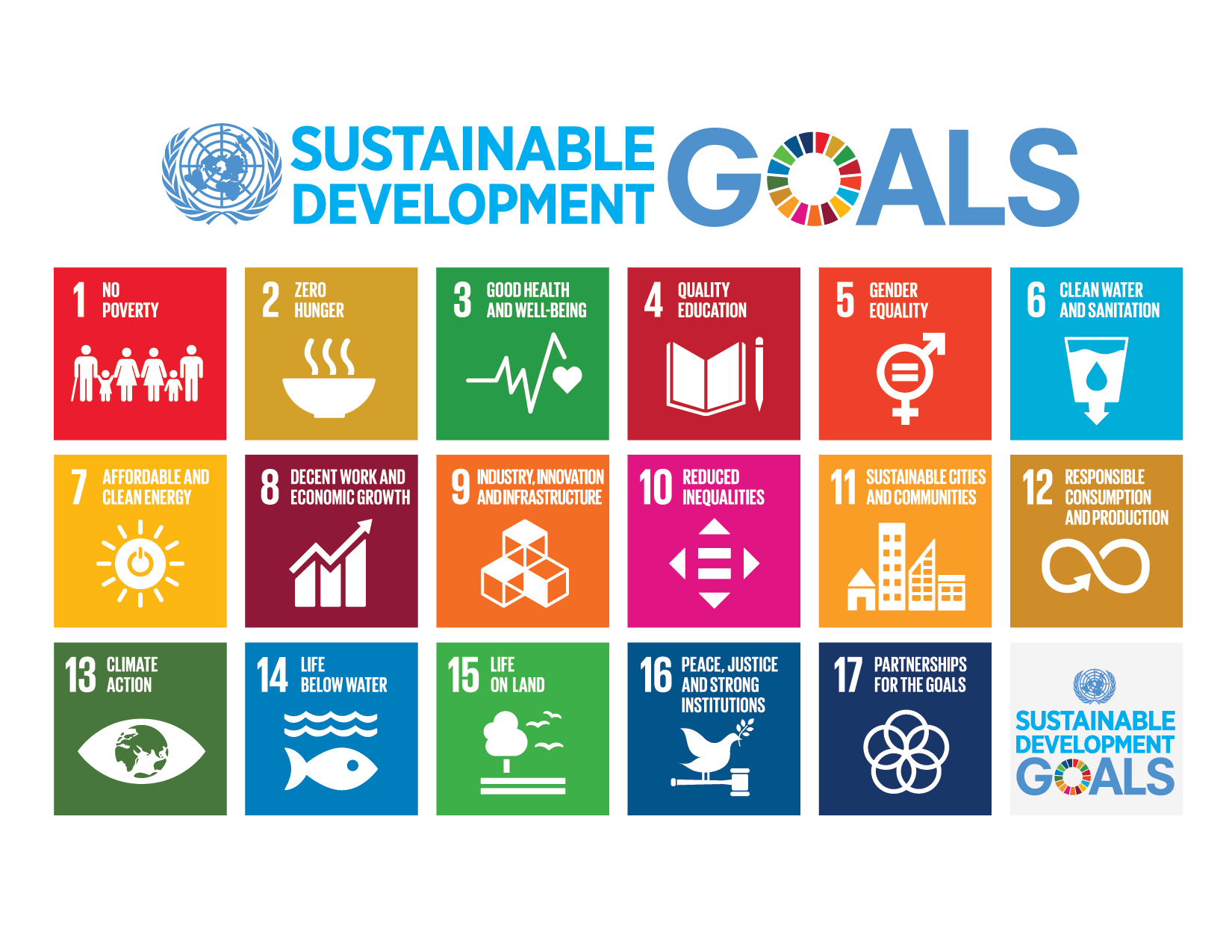
Welsh Government defines the circular economy as ‘keeping resources in use for as long as possible and avoiding waste’. This has been the basis for all of the examples I have used to illustrate how artists have adopted the circular economy intentionally or unintentionally. The circular economy is in contrast to the present linear economy, the ‘take-make-dispose’ approach, which involves the process of obtaining raw materials for manufacture transforming them into products that are distributed and purchased by consumers who end up throwing them away as waste.
A study into the benefits of the circular economy and how to unlock them in Wales by the Ellen MacArthur Foundation and commissioned by the Waste and Resources Action Programme (WRAP) on behalf of the Welsh Government, identified that the circular economy could deliver ‘manifold’ benefits for Wales, including the potential for job creation, a positive economic climate and cost savings throughout industry. It highlights that under specific conditions, the saving could be as much as £2 billion a year in material costs alone – although this would be throughout the whole supply chain, including those parts which are outside Wales.
To make this transition we will rely on a range of disciplines including scientists, engineers and economists, however, the role of art and artists is often overlooked. We do this at our peril as for one thing artists, novelists, poets and musicians can provide a different view to other disciplines. Art offers innovative approaches for addressing sustainability problems and facilitates collective deliberation, learning, and transformation . Which, it can do because it occupies a different intellectual, creative, and social space from science. According to the Ellen MacArthur Foundation, the charity established to accelerate the transition to a circular economy, to make the circular economy work, the imagination and creativity of artists is and will play a significant role. Emma Hislop, artist in residence, employed by the Foundation last year identified that art as a medium can inspire behaviour change. Hislop explains: ‘Art is made because [something] cannot be said any other way than by a visual language’.
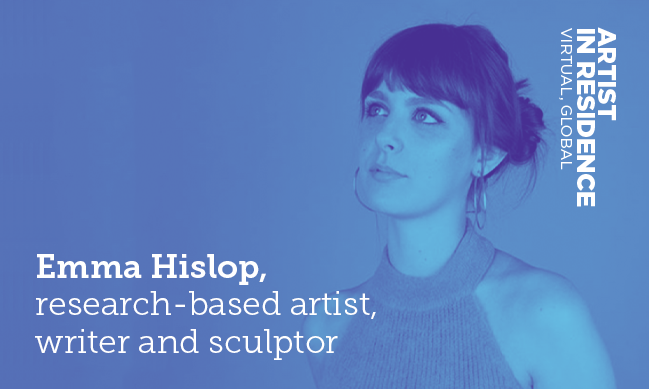
There are numerous examples of art and artists working on addressing critical social and environmental issues. Today we only have to look to Extinction Rebellion where art has been at the forefront of the movement’s activities and as explained by Kat Brendel, one of the movement’s art coordinators, who said that it ‘is completely fundamental to the movement’s ethos, which is to bring creativity into exploring the ecological emergency and present it to the public in a way that hasn’t been done before’.
In 2015, the National Assembly for Wales made a historic decision to change the course of Wales onto a more sustainable path by passing the Well-being of Future Generations (Wales) Act 2015. The legislation aims to improve the social, economic, environmental and cultural well-being of Wales, and strengthen governance arrangements within the public sector. The legislation places a statutory duty upon public bodies in Wales such as the Arts Council of Wales to adopt sustainable development as the central organising principle upon which all decisions are made. The council has worked with art centres such as the Wales Millennium Centre, who have achieved a Queen’s Award for Excellence for their environmental achievements, to share best practice and peer to peer learning on environmental issues.
At a community level, social enterprises such as Sustainable Wales have always sought to find the links between creativity and the environment and have developed ‘The Green Room’, an independent venue and small cultural centre, scheduling a series of events, talks and debates linking the circular economy and art.
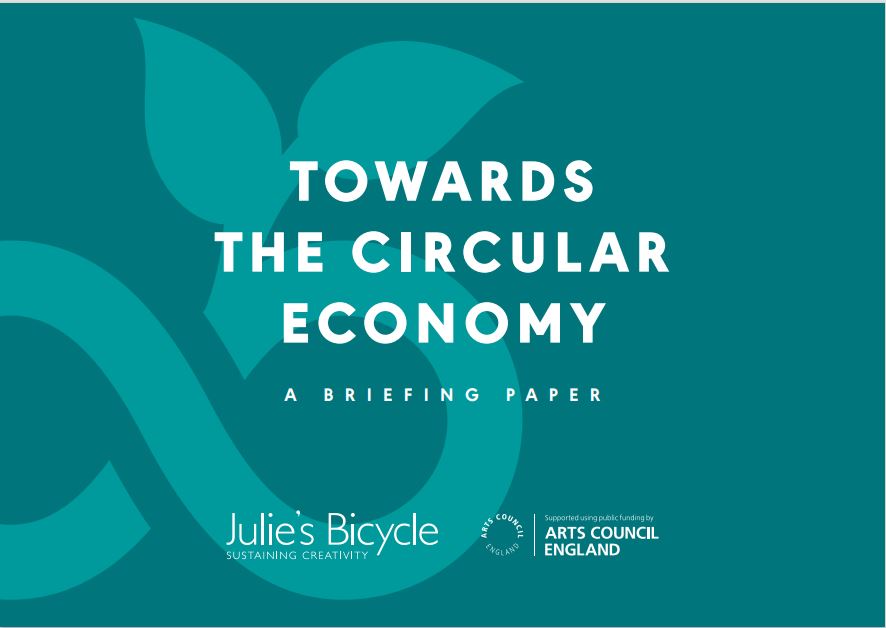
A leading exponent in this field is Julie’s Bicycle, a charity that supports the creative community to act on climate change and environmental sustainability. They have delivered a webinar on the circular economy, exploring ecological and circular economy principles, and how we can transform the way we use sustainable design and material choices in cultural establishments. In addition, they have produced a briefing paper, Towards the circular economy, which outlines benefits, actions and examples. Many of the starting points that an art organisation can adopt are outlined, including minimising waste, purchasing long lasting and reusable products and building environmental and social sustainability clauses into your procurement policy.
Creative Carbon Scotland’s Guide to Preventing, Reducing and Recycling Waste whilst explaining the rights and responsibilities of Scottish arts and cultural organisations when considering waste, provides useful information and ideas that could also be used by Wales based organisations.
A practical example of a cross-artform resource is the Circular Arts Network which is a circular economy tool created to support the arts. Administered by the Scotland based, Sculpture Placement Group, it is designed to redistribute spare or unnecessary resources from a disco ball motor to a doormat with the aim of making resources last longer, helping people working in the arts reuse and recycle easily; while also supporting other sectors to recycle their excess materials in a different way.
In the rest of this series, I will look at how artists and art organisations are now creating work that promotes and investigates the circular economy in visual arts, popular music and film and theatre. One thing common to them all is that they provide numerous examples that show creative individuals and organisations continuing to challenge and inform our discussions and decisions on the environment in the way that they use materials. This is more important than ever if we are to heed the call from arts and culture organisations of a green recovery from the coronavirus crisis, at the heart of which will be transformational change to a circular economy.
Brian Royson Mayne is a fellow of both the Royal Society of Arts and Chartered Institution of Wastes Management. He is a Chartered Environmentalist with extensive experience of working within the Circular Economy this has involved business development, providing advice to SMEs and Social Enterprises.



